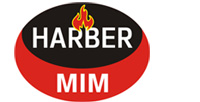With the continuous development of metal molding technology, a variety of new manufacturing technologies continue to break through. Component manufacturers are producing on an unprecedented scale.

This latest news highlights how new technologies are changing the way we manufacture products. While the new technologies are incredible, sometimes the tried and true old methods are king.
Metal Injection Molding (MIM) and Powder Metallurgy (PM) it's not the newest, most advanced technology, but one of the oldest manufacturing methods.
Why is the powder metallurgy process still in use?
It's simple because it works.
In this article, we'll focus on the pros and cons of using traditional powder metallurgy and when to choose metal powder metallurgy over other methods.
What is metal powder metallurgy?
Before we delve into the pros and cons of powder metallurgy, it is necessary to understand powder metallurgy and how it works.
Powder metallurgy is a process that utilizes heat and compression to make parts out of powdered metal. The process can be divided into four steps:
Powder Production - Produces metal powder.
Mixed metal powders are blended with other metals and binders
Compression - Compresses the powder combination into shape
Sintering - Heating the part to melt the particles
Powder metallurgy involves turning metal into powder, mixing it with binders, pressing it into shape, and then sintering it at high temperatures to fuse the metal particles together. The fundamentals of the powder metallurgy process are still very much at the forefront of production advantages as one of the oldest manufacturing methods.
Advantages of Powder Metallurgy Injection Molding
With so many advanced manufacturing methods to choose from, why do manufacturers still opt for the powder metallurgy production process?
There are a number of reasons. The top five advantages of powder metallurgy are as follows
Minimization of precious metal scrap and costs
Special properties - final characteristics can be altered
Produces precise and complex metal parts
Omission of CNC finishing processes
Automation of applications
1. Minimizing Waste and Costs
Almost all manufacturing processes strive to minimize waste and remain cost effective. Powder metallurgy can do both. Powder metallurgy is an environmentally friendly method of mass-producing parts utilizing 97% of the initial material that no other method can match.
As mentioned above, the first step in the powder metallurgy injection molding process is to make metal powder. If there is unused powder, it can be reused in another cycle, reducing waste from the start of the process.
In the pressing step of the powder metallurgy process, the metal part is pressed to its final size, so there is no need to remove excess scrap metal during the finishing process. Powder metallurgy loses only 1-5% of the metal, whereas other production methods can lose up to 80% of the metal. As metal scrap decreases, cost savings automatically increase.
2. Ability to change final characteristics
There are four factors that affect the performance of the final part in powder metallurgy:
Powder Type Metal Powder Particle Size Binder Amount Sintering Conditions When selecting the powder type, a variety of metals should be used to create a unique alloy for each part. The combination of carbide and binder determines part pH, viscosity, and filtration level.
Other factors such as porosity, hardness and stress properties affect the performance and final characterization of the part.
The unique ability of the powder metallurgy injection molding process to alter the properties of the final metal alloy part is one of the reasons why the powder metallurgy injection molding process is used today.
3. Production of sophisticated and complex metal parts
In addition to the special properties of powder metallurgy, the manufacturing process can also produce high precision and accuracy automotive parts and other commonly used parts.
Since the metal powder particles are easily controlled, the desired shape can be formed quickly and easily.
4. Omission of finishing process
After sintering, the metal part is close to a net shape and the metal part does not require finishing. Omitting the finishing step for metal parts has three advantages.
Cost savings by not requiring additional metal material
Reduced time-to-market due to faster production speeds compared to processes with longer finishing steps
Consistency through the same surface finish
The Powder Metallurgy Metal Injection Molding process has the ability to produce high-precision parts without the need for finishing, which is very beneficial for industries (e.g., automotive) that want to shorten their time to market and reduce costs.
5. Application automation
Powder metallurgy is a cost-effective, efficient, and stable process, but automation takes it to the next level. Automation in powder metallurgy injection molding can be applied to the entire process from start to finish, beginning with the mixing and compaction stages.
Automated powder mixers can accurately measure the powder and mix it accurately and uniformly. The metal powder can then be automatically compacted by hydraulic or mechanical presses to achieve the same density every time.
Once the metal part enters the sintering stage, an automatic sintering furnace can control and regulate the temperature to ensure the highest quality metal part is produced.
Throughout the metal powder injection molding process, automatic inspection systems perform quality control. These systems detect errors or defects before they occur. Correcting problems quickly saves time and costs in the long run.
Disadvantages of Metal Powder Injection Molding
No process is perfect. Metal powder injection molding has its advantages, but it also has three disadvantages:
Metal parts are limited by size and shape
Low cost of producing parts in small batches
Density of metal parts varies by compaction













